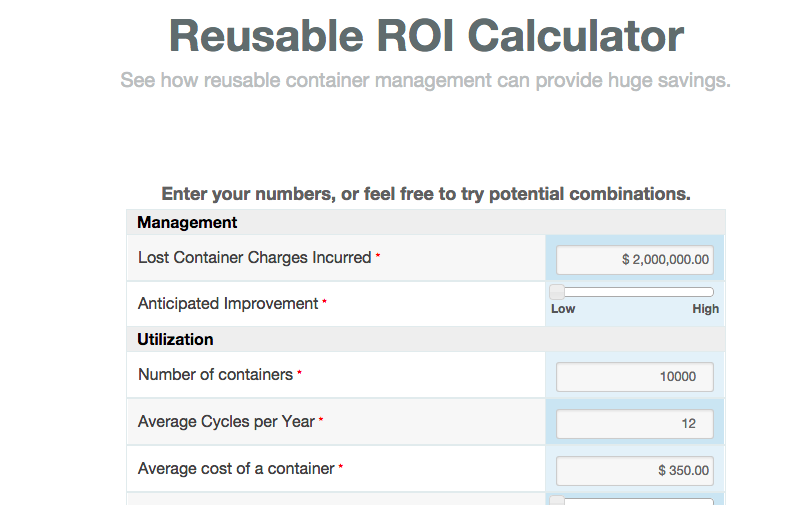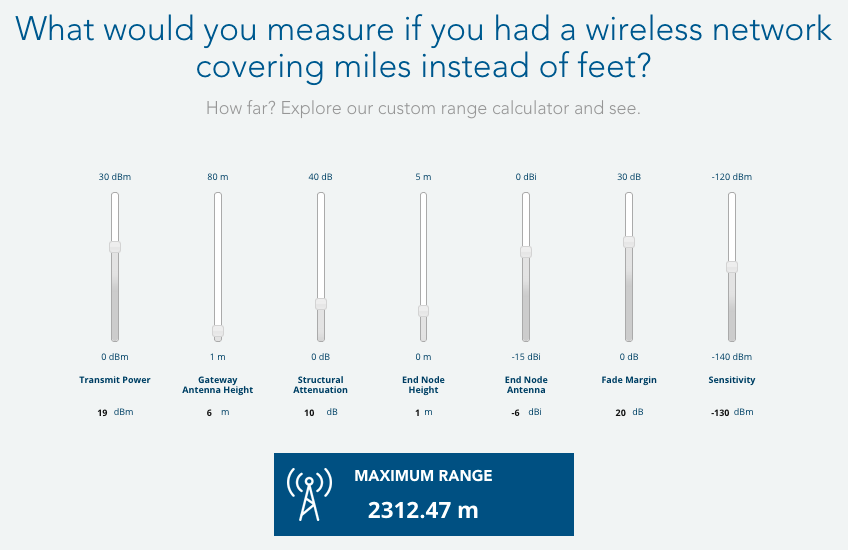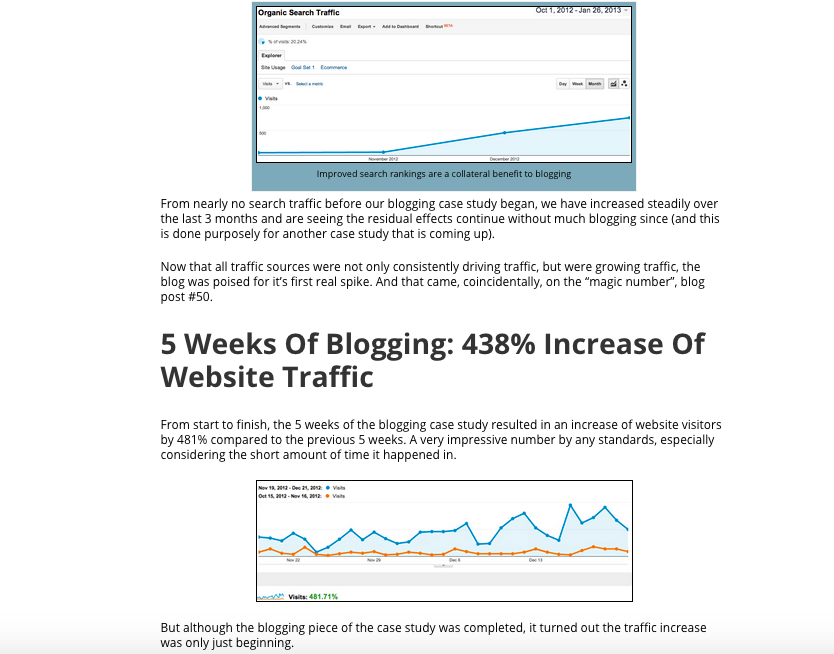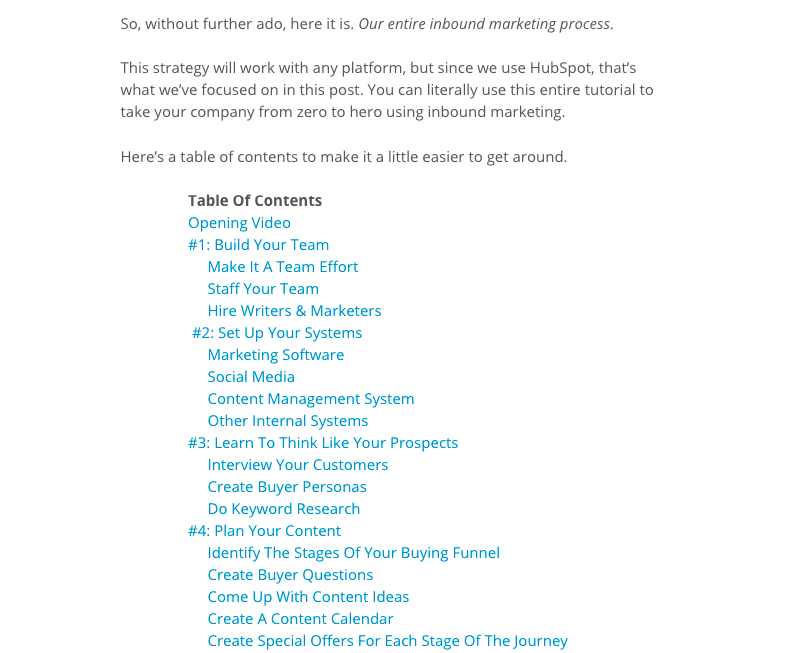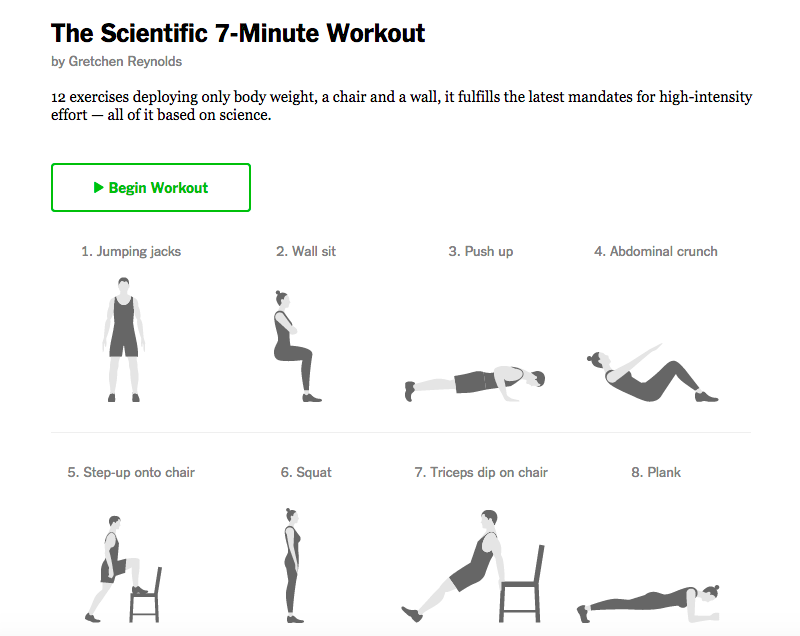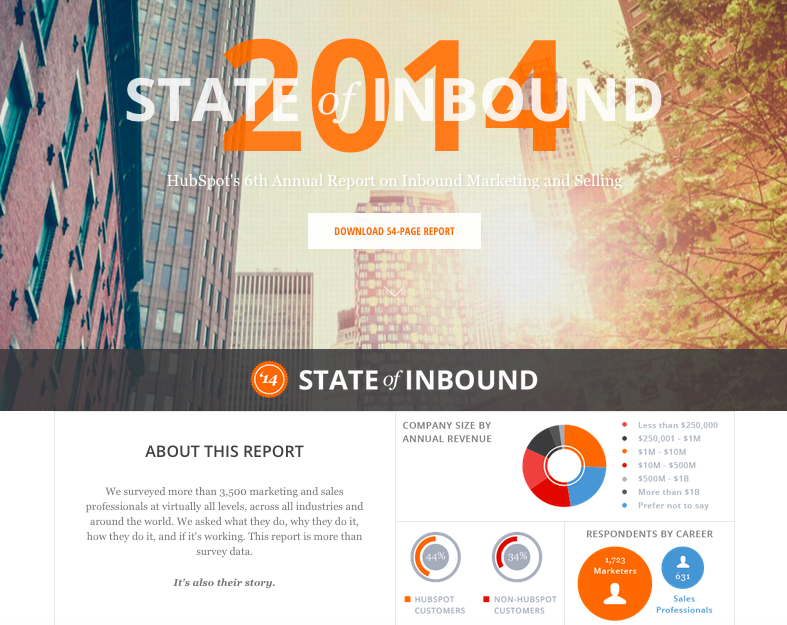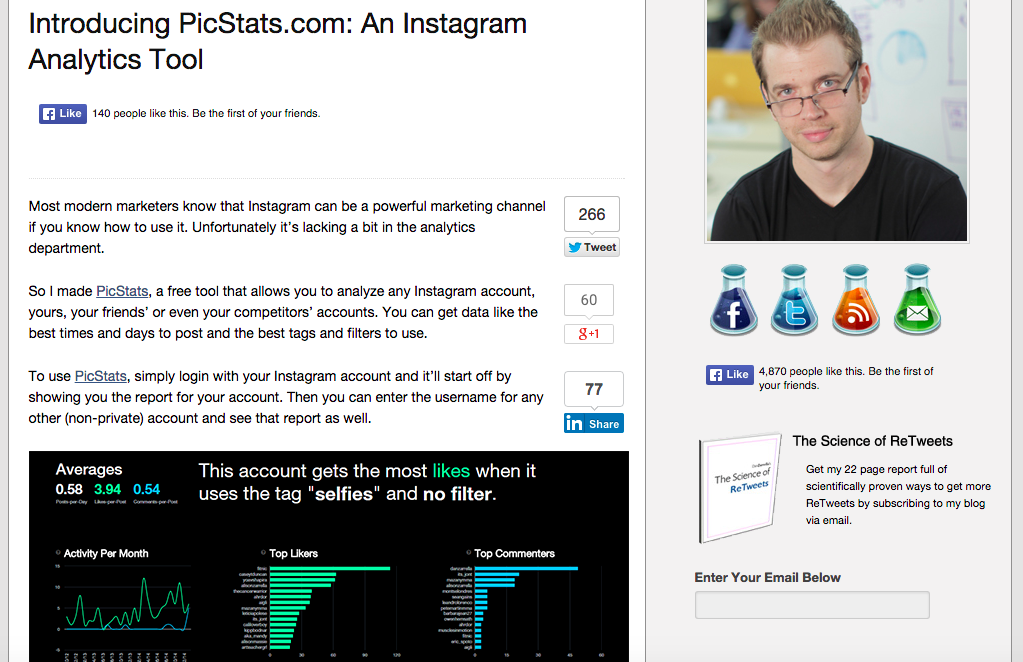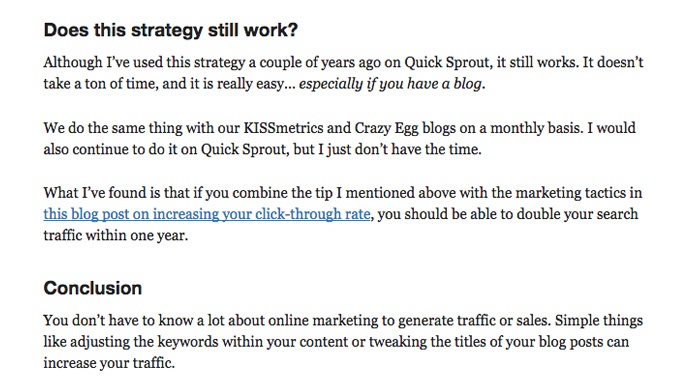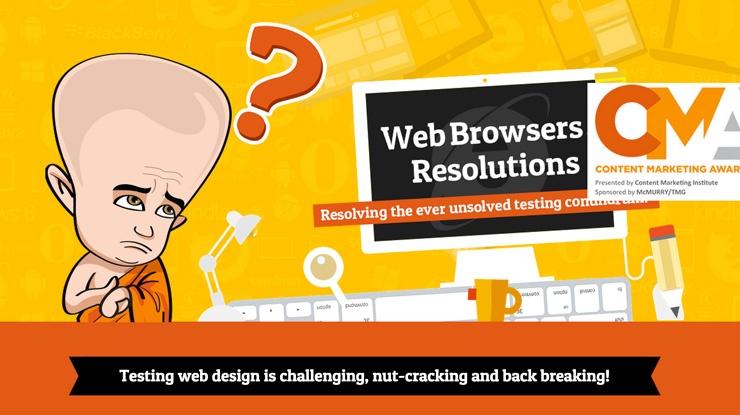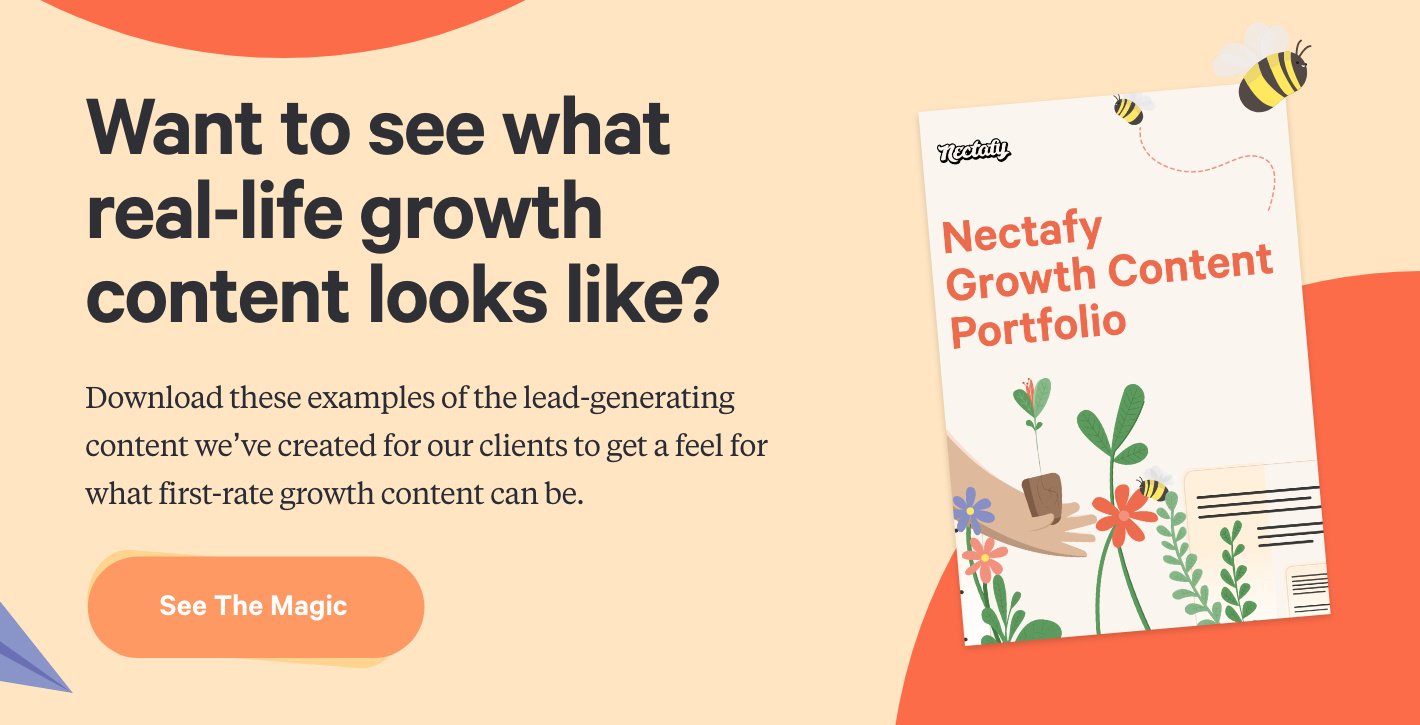Beyond Blogging: 8 Unique Types of Inbound Marketing Content


by Megan Marling • 5 minute read • June 24, 2015

Every Monday at Nectafy, we have a one-hour team video meeting. Our entire team is remote, so we all gather from our collective corners of the U.S., and come together for some team building, learning time, and client review. It’s a lot of fun (if I do say so myself)—it’s one of the things I look forward to each week.
In those Monday meetings, we bring and discuss new ideas to implement throughout the company. These ideas are sometimes incredibly simple or can be quite complex—big or small! It doesn’t matter. We talk about these new ideas so we can keep moving forward as a company, in order to take Nectafy from good to great.
Now, does that mean the “old” methods that have gotten our company to where it is today are ineffective? Not at all. But we believe in moving things forward and breaking the mold on tried-and-true methods.
We have nothing but love for the typical types of inbound marketing content. But we have seen firsthand quite a few under-explored inbound marketing opportunities. So, in typical Nectafy fashion, we’re exploring them and documenting the journey here. Enjoy!
8 Types Of Unique Inbound Marketing Content
1. Calculators & Quizzes
Why it works: I’m willing to bet that at some point, you’ve needed to use an online calculator. Maybe it was to help you calculate something as simple as adding a column of numbers; or it could have been for something as complex as how much your net worth will be once you invest a particular percentage of your yearly income into a particular stock that yields a particular dividend.
Regardless of why you needed a calculation tool, the reason you were searching online for this type of tool was the same as any other scenario: you knew that somewhere on the web, someone had created a tool that allowed you to calculate something faster than you would be able to on your own.
Can you see how inbound marketing has an excellent opportunity to capitalize on such a tool?
Who it works for: Creating a calculator is great for any organization that can solve a multiple-step “equation.” For example, let’s say your company offers online German lessons. You could create a “calculator” that quizzes your web visitors on their German-language aptitude, and then ranks their skill level accordingly. If you can provide your programmer with a list of steps that end in a certain outcome—sort of like a “choose your own adventure” book—then you can create a calculator.
Examples: Wave Reaction helps suppliers and OEMs manage their reusable containers. They created a return on investment (ROI) calculator that is entirely unique to their industry—it allows the user to see how much money they would save by switching to reusable container management. As an added bonus, the company asks for an email address so that they can further explain the calculation and what went into it.
Link Labs is an engineering startup that has created a new type of wireless technology, which is called Symphony Link. It is a wide area, low-power wireless solution for the Internet of Things (IoT). This may sound like a confusing concept to some, but to those that are involved with IoT, it’s incredibly important. In order to help website visitors understand how much wireless range they could expect, Link Labs created this calculator. It allows users to adjust seven important factors to help them understand if it could be a fit for their M2M product.
2. Studies
Why it works: Studies have always been an integral part of the way companies progress. First they were used internally to figure out what was working and what wasn’t, and eventually, companies wised up and began publishing the results. These can be gated—meaning, you can ask the user to provide some of their identifying information, like name and email address—but they are also extremely effective as long blog posts.
Who this works for: If your organization is business-to-business (B2B), you can create a study about something that your buyer personas—your target audience—are interested in. For example, if you help advise large grocery companies on which types of refrigerators to buy for their frozen section, you could create a study on long-term use of the top two refrigerators.
Example: This company, Tresnic Media, decided to write two blog posts every day for five straight weeks. They then documented and reported on their results—complete with plenty of interesting charts and graphs—in this post.
3. Massive Posts
Why it works: Massive long-form posts attract more attention than shorter posts, and are typically ranked higher in search engines. So, it’s a no brainer that this type of content makes our list!
Who this works for: “Massive posts” (as we’ve dubbed them), are fantastic for any company who does inbound marketing—so long as you’re willing to actually write 10,000 words or more! It’s no easy feat, but the results can be well-worth the effort. Many companies will turn up their nose at the idea of publishing that many words without asking for anything in return from the reader, but there are some major rewards.
- Google loves them. So you’re probably going to rank for a lot of keywords, which could, in turn, up the ranking for other articles on your website.
- Readers love them. After publishing a massive post, it’s likely you’ll be seen as a subject matter expert by a lot of people. That means the next time they have a question that pertains to your industry, guess who they’ll turn to? Yep—you.
- You’re upholding the law of inbound marketing: “helping people.” OK, it’s not a law—but it’s a nice guideline of how to do inbound right. Helping your potential leads and customers in a big way is something any company should be able to get behind.
Example: At Nectafy, we put our minds to this a few months back. To tackle it, we had a three-hour long video conference, where we put our heads together (digitally, of course) to come up with an outline and do some initial writing for the post. After the call, each member of the team was assigned to work on the post in various ways. The whole process took a long, long time, and the end result was a 19,000-word, step-by-step inbound marketing plan. (We’re pretty proud of it.)
4. Interactive Games
Why it works: Who doesn’t like games? Whether they’re exercising their bodies or minds, people love to put their skills to the test. So, use your inbound marketing content as a way for them to do this.
Who it works for: If your company deals with fitness or exercise whatsoever, this is a no brainer! (You’ll see that in the example below). But don’t pass this over if your company has anything to do with mind exercise (that’s a thing, right?). Depending on your industry, you could create a silly game that entertains people. Or you could create a game that forces people to think critically. This could be a crossword puzzle about your industry, or something even zanier. If your company atmosphere is goofy and unique, you could create a viral success.
Example: Our marketing manager, Henry, sent this quick 7-minute interactive workout to our team a while back. It’s quick, entertaining, and gets your blood moving when you’re in a work slump. And it’s clearly effective, because many of us have visited the page several times.
Alright, get up! Yes, you. (I can see you rolling your eyes.) Just give this a try! Click on image above and follow the instructions for the “scientific 7-minute workout” (or the advanced 7-minute workout, if you’re feeling fancy). I’ll wait until you’re done.
OK, done? Did you see how fun and simple that was? Now catch your breath, take a drink of water, make a note to create a cool website game, and let’s move on.
5. State Of The Industry Reports
Why it works: State of the industry reports are a somewhat rare find in inbound marketing. Since there aren’t many companies doing them, it gives your organization a unique opportunity to accomplish something that many of your competitors probably never will. It works as an inbound tool simply because data is derived factually, and everyone wants to know the facts, trends, and yearly updates of the industry they’re in.
Who it works for: If you’re up for compiling this type of data—maybe your company already does compile data—then this is perfect for you. Putting this information in a gated PDF is a great way to go. Also, be sure that you’re making it very visually pleasing—no one likes reading dry stats, but we love looking at pie charts and heat maps!
Example: HubSpot’s state of the industry inbound marketing report acts as the be all, end all for our industry. They survey thousands of marketing companies and compile loads of data each year, and then put out a 50-something page report on their consolidated findings. Pretty sweet, huh?
6. Science & Data
Why it works: Inbound marketing is all about helping people in your industry—i.e., your buyer personas. So if your buyer personas are people who are interested in scientific reasoning and data-driven research, that’s what you should give them!
Who it works for: Science may not be applicable to every industry, but data certainly is. The more facts and statistics you can extrapolate from either your product or your industry, the better. For example, let’s say I own a candy company called “Megan’s Marzipan.” To position myself as the industry leader I’ve always wanted to be, I could explain the scientific reason why marzipan tastes so good and why Megan’s Marzipan is scientifically proven to be even better. Or, if I’ve started a B2B company that sells high-end office furniture to large corporations, I could create a series of articles that describe the scientifically-backed reason that ergonomic chairs and well-made desks boost productivity.
Example: Dan Zarrella was one of the first marketers at HubSpot, and is now an award-winning author for his books about the science behind social media. He also blogs (somewhat infrequently) at danzarella.com. One of his latest posts is titled Introducting PicStats.com: An Instagram Analytic Tool, in which he introduces his latest project. He cooks up scientific insights and loads of visually-appealing data, and his readers eagerly devour it.
7. Historical Optimization
Why it works: It’s easy to get swept up in creating shiny new content. It’s so clean, crisp, current, and updated, and in the moment that you’ve created it, it’s totally and completely optimized. But, like all content, it slowly grows older with time. Soon, a good deal of it is geriatric and neglected. Do you know what happens to neglected content? Absolutely nothing. It gets no visits, attracts no readers, and converts no one into a lead. And after it’s completely forgotten about, the information becomes simply irrelevant. Does this sound fantastic? Probably not. “Historical optimization,” as it’s often called, works to fix this problem.
Who it works for: If you’ve ever written or created a piece of inbound marketing content, you can do historical optimization. Here are a few tips and tricks:
- Optimize your best-performing pieces of content. In other words, revisit the content that has ranked well for you in the past, and revise it so that the content remains accurate. People want to see that the web page they’ve just happened upon is updated and relevant.
- Watch out for old links. If you link to or mention data in an article that eventually becomes outdated or incorrect, your article becomes outdated or incorrect, as well.
- Visually prove that you’ve recently updated the content. This could be through an italicized sentence at the beginning of an article (i.e., Note: This article has been reviewed for accuracy in June 2015), or through some other means, like the one shown in the example below.
Example: This snippet is from a blog post on Quick Sprout—which is marketing guru Neil Patel’s website. The article is titled How to Increase Your Website’s Traffic Without Any Marketing. In it, Patel references the year 2013—which is the year that he originally wrote and published the blog post. At the end of the article, there is a section titled, “Does this strategy still work?” The last publish date on the article reads January 21, 2015. So, as the reader, I know that he’s revisited this blog post, historically optimized it, and thus, proven that I can trust this content for accuracy. (If you want to learn more, HubSpot has a great article on historical optimization.)
8. Interactive Or Animated Infographics
Why this works: Infographics have been around for quite a while now, and they’re certainly popular. Many companies will create infographics for just about anything! In our humble opinion, infographics can be great, but only if they’re relevant, factually sound, and visually intriguing (without being overwhelming). This can be a tall order—infographics that miss the mark often result in the customer losing focus or the intended meaning getting lost in translation. So how do you avoid this? Our favorite alternative to tired, static infographics is to make them interactive or animated.
Who this works for: Virtually any company—B2B or B2C—can benefit from this type of inbound marketing content.
Examples: Not too long ago, we created an interactive infographic on why inbound marketing actually works. As you scroll down the page, you are able to easily tweet the things that each of the featured people are “saying” about inbound marketing. At the end, there is an aggregated feed of what everyone who has visited the page has tweeted. This makes it fun for the person visiting, because they get to be a part of building something.
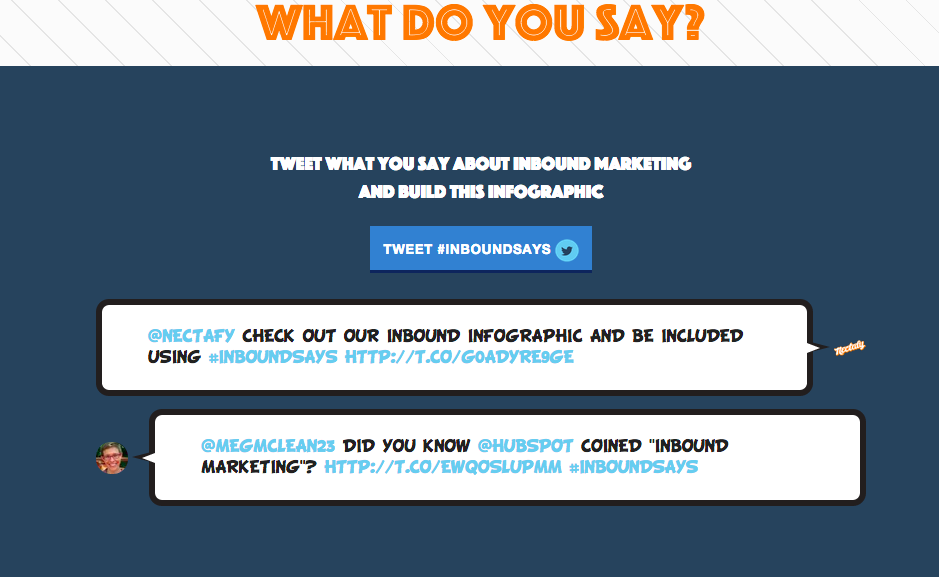
Here’s another example: Last year, Webby Monks created an awesome animated infographic on website testing. As you scroll down the page, new features animate—it’s like the web page is putting on a live show for you as you read it! This captivates viewers and leaves them wanting to see more.
Here’s a screenshot, but you have to click through to get the full effect:
It’s Time To Break The Mold, Inbound Marketers
This is the part where I’m supposed to give you a key takeaway in a clever and unique way, but in the spirit of the moment, I’m going to give it to you straight.
Don’t be afraid to try something new.
New types of marketing content are being tried every day—some are working, and others are failing miserably. But those who are actually giving these a try are going to have more success than those that stick with their safety nets.
Don’t forget to report back if you decide to give one of these a try. We’d love to learn how they worked in a comment below!
